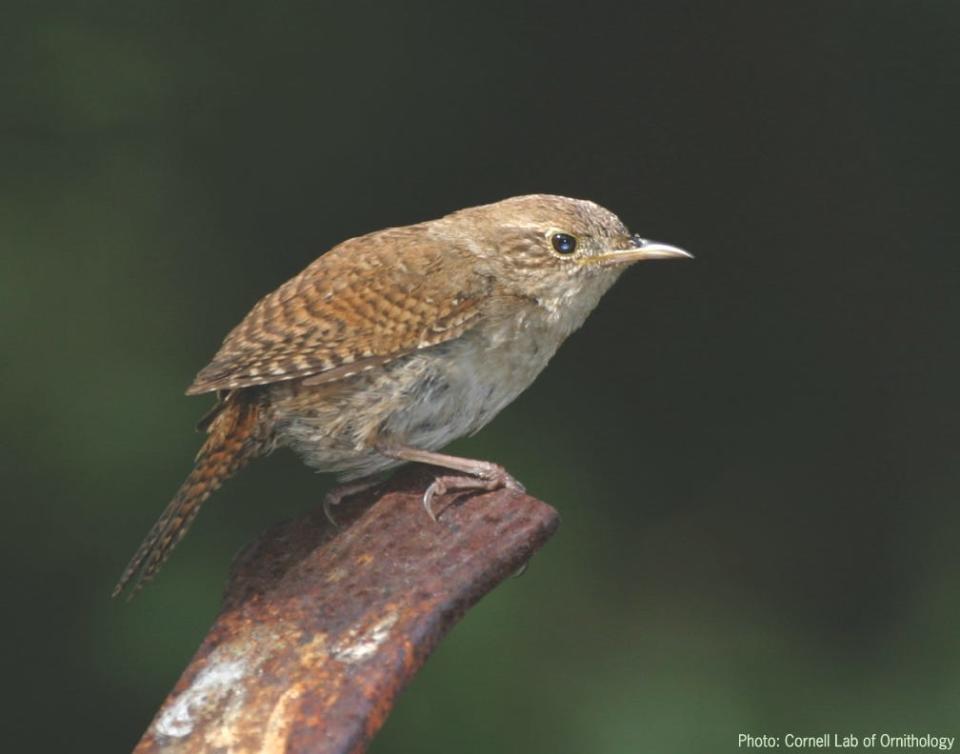Todd Burras: Wrens really dig bluebird houses

I wasn’t a good landlord this past year. The tenants, however, faired seemingly well in their temporary spring and summer digs.
This is what I was reminded of last weekend, while cleaning out and repairing nesting boxes that are part of a bluebird trail here in Ames that I try to manage. The trail is comprised of 10 nesting boxes, although midway through the summer I relocated one remote box and pole that hasn’t been used for several seasons to a more attractive site that will hopefully catch the attention of a bluebird pair next spring. If not bluebirds, perhaps a couple of chickadees will use it to raise a family. Or, if this past summer is repeated, it will be house wrens that take up residence in it.
This past nesting season was a productive one for house wrens near Ames High Prairie-Richard W. Pohl Memorial Preserve and the nearby Ioway Creek corridor. The males arrived early and earnestly set about collecting and arranging twigs in the boxes, which are intended for use by bluebirds with preference also shown for chickadees and tree swallows. The wrens, as well as house sparrows, are nemeses to the other species and therefore are less desirable (wrens) or undesirable (house sparrows) as tenants.
A male house wren has the tendency to begin building nests in multiple nesting cavities — natural or manmade — before its mate shows up and ultimately picks the site in which she wants to raise her brood. After that, the male often goes around and fills the alternative cavities, leaving them unusable by rival wrens or any other cavity-nesting birds, for that matter. In my experience, it’s common to find a pair of wrens in one nesting box and nearby nest boxes or tree cavities packed full of twigs. But that didn’t happen this year.
My intent as a landlord is to check nesting boxes at least once weekly starting in early spring and to discard any early nest construction by house sparrows or wrens in an effort to dissuade them from utilizing the boxes and producing offspring — at least not in close proximity to nesting bluebirds and, to a lesser extent, tree swallows and chickadees. House sparrows and wrens compete with those birds for nesting cavities and are known to frequently destroy their nests and eggs and even, on occasion, to kill the adults. Monitoring the boxes is a way of trying to reduce competition and potential conflict and to ensure that there are boxes available for whenever the bluebirds arrive and are ready to start nesting themselves.
Going into nesting season, that’s always my management plan, but things don’t always go accordingly. This spring started well, and I thwarted several early nest-building attempts by wrens while patiently waiting for bluebirds to appear. But as weeks went by with no signs of bluebirds, I found myself getting bogged down by work and too many other commitments. Checking the boxes became a sporadic chore, and the wrens took full advantage of the lack of vigilance on my part. By early May, they had moved into seven of the boxes, and the females were busy filling each nest with eggs.
By mid-May, a pair of bluebirds finally showed up at the preserve and set about building a nest in one of the three unoccupied boxes. The female laid five eggs, but just a week later they were gone — perhaps the victim of a vengeful wren or house sparrow. Not to be deterred, however, the bluebirds re-nested, and by the third week of June they had six nestlings that fledged at the end of the month.
In five years of monitoring the trail, this summer saw the most successful wren nesting attempts but the fewest for bluebirds, an unfortunate and similar occurrence experienced by several other bluebird landlords I know. Only two nesting boxes didn’t produce any birds — the aforementioned box that I moved in mid-summer and another that was consistently occupied by wasps, despite my best efforts on several occasions to detour them.
The house wrens have flown south for the winter, but some of their kind won’t be absent from the area for the entire winter. In the past couple weeks, one of the house wrens’ close relatives has moved into our neighborhood. A Carolina wren was initially heard singing from a nearby neighbor’s backyard before showing itself in recent days at our backyard feeders and birdbath. If it sticks around, it would be a welcome visitor to our neighborhood this winter and a potential nesting box tenant next spring.
Todd Burras can be reached at outdoorstoddburras@gmail.com.
This article originally appeared on Ames Tribune: Todd Burras: Wrens really dig bluebird houses

